Creating a stunning wall art arrangement can be challenging. The gallery wall layout calculator is your solution. This tool transforms spaces from dull to dazzling, making it easy to showcase your favorite pieces.
A wall art arrangement calculator offers tailored recommendations based on your inputs. You can enter wall dimensions, artwork sizes, and layout preferences. The tool considers spacing and balance for a professional look.
This photo gallery wall designer simplifies creating visually appealing displays. It works for both seasoned designers and DIY enthusiasts. You’ll save time and avoid endless rearranging.
The result? Perfect arrangements that impress guests and bring joy to your daily life.
Key Takeaways
- Gallery wall layout calculators simplify the art arrangement process
- These tools consider wall dimensions, artwork sizes, and layout preferences
- Calculators provide tailored recommendations for balanced displays
- They help achieve professional-looking results for both experts and novices
- Using a calculator saves time and reduces frustration in wall art design
Introduction to Gallery Wall Design
A gallery wall transforms your living space into a stunning display. It showcases your personality and adds visual interest to any room. With the right tools, you can turn a blank wall into a captivating artwork display.
The importance of thoughtful art arrangement
Thoughtful arrangement is crucial for a successful gallery wall. A decor layout assistant helps achieve the perfect balance. The midline of your gallery wall should be 60-65 inches from the floor.
This eye-level placement ensures your artwork catches attention. It also creates a harmonious look in your space.

Challenges in creating a balanced gallery wall
Creating a balanced gallery wall requires careful planning. Consider frame sizes, spacing, and overall composition. An artwork placement guide suggests 1-3 inches between pieces for a cohesive look.
The total width of your artworks should be about ⅔ the width of nearby furniture. This ensures proper scale in your room.
The role of technology in interior design
Technology has transformed interior design. A home decor layout creator can calculate frame sizes and determine optimal spacing. These tools offer precise measurements for fastener positions and centerlines.
Using technology ensures your gallery wall looks professional and polished.
“Technology in interior design is not just a trend; it’s a game-changer for creating perfect gallery walls.”
The right tools and knowledge help overcome gallery wall design challenges. You can create a stunning display that reflects your style and enhances your space.
Understanding the Gallery Wall Layout Calculator
A gallery wall layout calculator is a game-changing interior design tool. It takes the guesswork out of creating stunning art displays. This tool helps both novice decorators and seasoned designers plan photo displays effectively.
Definition and Purpose
The gallery wall layout calculator is a digital picture frame arrangement tool. It simplifies planning and executing eye-catching art displays. Users input wall dimensions and artwork sizes to receive tailored layout suggestions.
These suggestions maximize visual impact and space utilization. The tool helps create balanced and appealing gallery walls with ease.
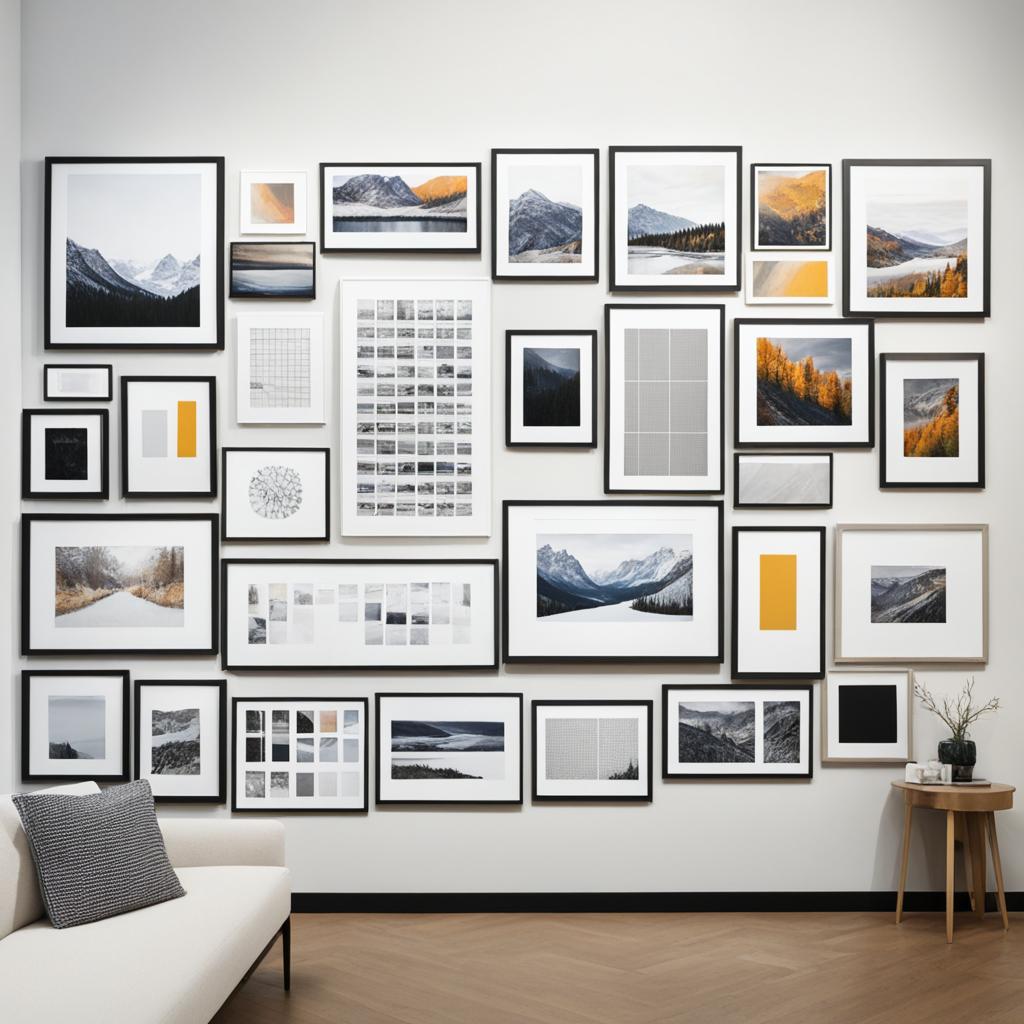
Key Features and Benefits
This wall styling calculator offers numerous advantages:
- Precise calculations for optimal spacing (typically 3 inches between pieces)
- Suggestions for ideal row numbers and heights
- Ability to experiment with different artwork sizes and arrangements
- Guidance on mixing frame styles and art mediums
Revolutionizing Art Display Planning
The gallery wall layout calculator transforms art display planning. It lets users visualize arrangements before physical placement. This saves time and prevents costly mistakes.
Users can experiment with various layouts. This encourages creativity and ensures a personalized, visually striking result.
| Feature | Benefit |
|---|---|
| Space utilization calculation | Fills 60-75% of visual space for balance |
| Artwork size recommendation | Suggests ideal dimensions based on wall size |
| Layout experimentation | Enables testing of various arrangements |
| Frame style mixing guide | Advises on combining up to 3 different styles |
The Science Behind Gallery Wall Layout Calculators
Gallery wall layout calculators blend art and math to create stunning displays. These tools use complex algorithms to process user input and generate optimal arrangements. The science behind these calculators is both fascinating and practical.
Every gallery wall design assistant uses a formula considering wall dimensions, artwork sizes, and desired spacing. The basic spacing calculation uses:
S = (W – (N * P)) / (N + 1)
S is spacing, W is wall width, N is number of pictures, and P is picture width. This formula ensures balanced spacing between art pieces.
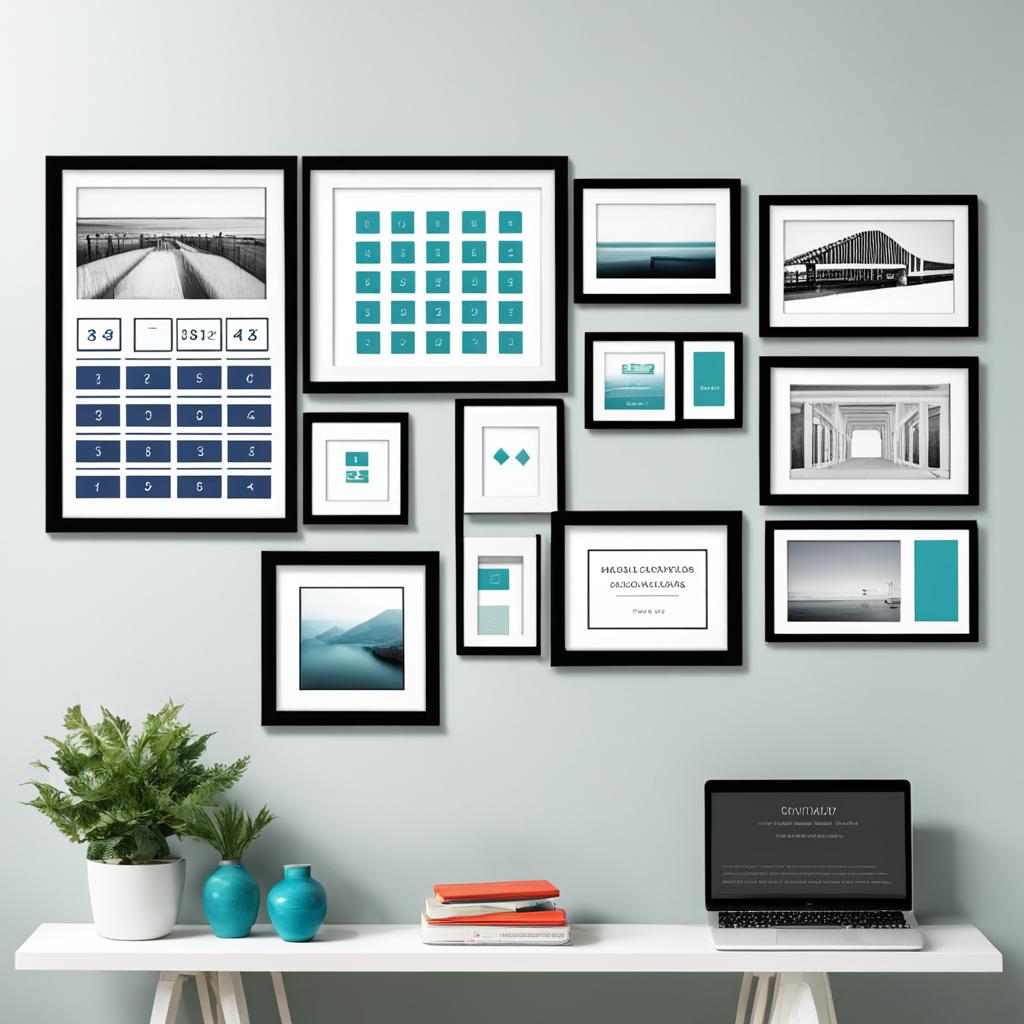
Wall decor layout optimizers factor in color repetition, art styles, and frame sizes. Repeating colors 2-3 times across pieces creates visual cohesion. Mixing art styles and sizes adds dynamism to the display.
Advanced photo collage layout calculators consider frame finishes and non-framed objects. They might suggest using at least three frame finishes. They may also recommend incorporating dimensional pieces like ceramic wall hangings or mirrors.
These scientific approaches ensure accurate, aesthetically pleasing arrangements. They take the guesswork out of design, helping you create professional-looking art displays easily.
Essential Inputs for Effective Calculation
A gallery wall layout generator needs specific inputs to create the perfect art display. Let’s explore the key elements for an artwork arrangement calculator. These inputs help craft a stunning visual display.
Wall Dimensions
Accurate wall measurements are crucial for any gallery wall design. Input the width and height of your wall in inches. This data helps determine the available space for your art pieces.
Artwork Sizes and Quantities
Enter the dimensions of each artwork you plan to display. Include the frame width for precise calculations. The generator needs to know how many pieces you’re using.
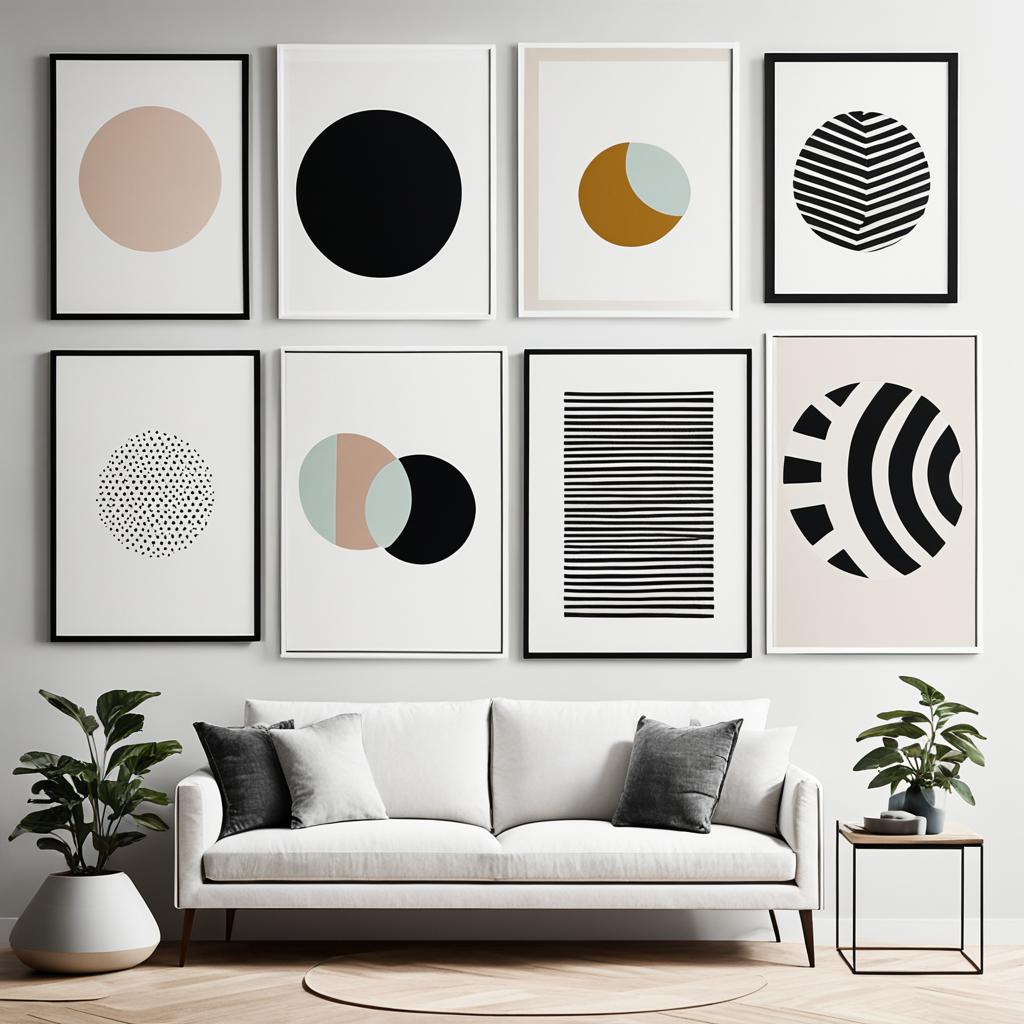
Spacing and Layout Preferences
Define your desired spacing between frames. This typically ranges from 2 to 4 inches. Some calculators allow you to specify layout preferences, like symmetrical or asymmetrical designs.
| Input | Example | Impact on Layout |
|---|---|---|
| Wall Width | 96 inches | Determines overall space |
| Wall Height | 72 inches | Influences vertical arrangement |
| Artwork Size | 16×20 inches | Affects spacing and grouping |
| Frame Spacing | 3 inches | Creates visual breathing room |
These essential inputs enable the gallery wall layout calculator to generate a customized plan. This approach saves time and prevents mistakes. It ensures a visually appealing art display in your space.
Gallery Wall Layout Calculator
Step-by-Step Guide to Using a Gallery Wall Layout Calculator
A wall decor layout tool simplifies creating the perfect picture frame layout. Let’s explore using a gallery wall template to design your dream art display.
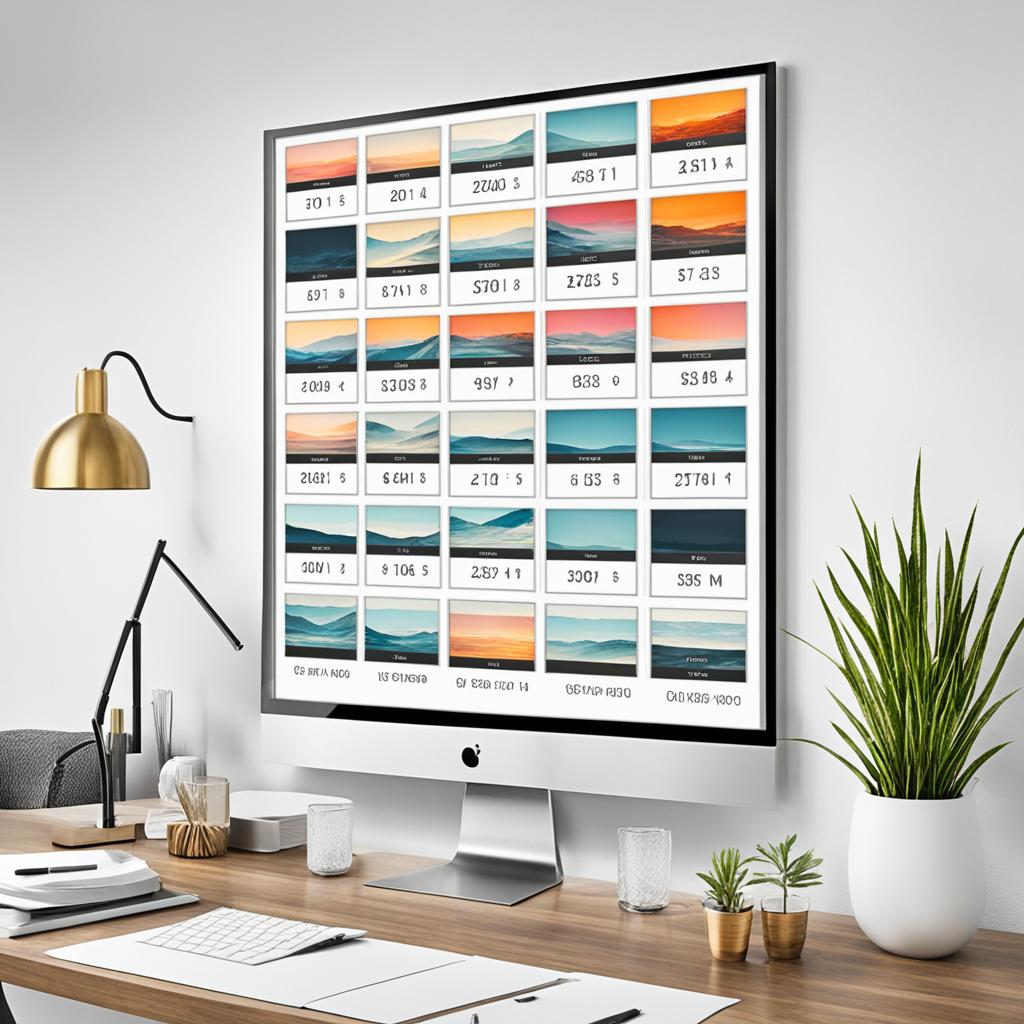
Start by measuring your wall and artwork dimensions. Most gallery walls center around 57 inches from the floor. Note these numbers for your hanging art calculator.
Now, go to wall decor layout tool above. Enter your wall size and each art piece’s dimensions. Include frame widths in your measurements.
- Enter wall dimensions
- Input artwork sizes and quantities
- Specify desired spacing (3-6 inches is standard)
- Choose a layout style (grid, salon, etc.)
- Hit “Calculate”
Your gallery wall template will suggest optimal arrangements. It might recommend a 3×2 grid layout with 3″ spacing. Review the results and adjust to your preferences.
Gather your tools: level, hammer, nails, and painter’s tape. Use a stud finder for heavy pieces. Now, bring your calculated design to life!
“A well-planned gallery wall can transform a space in less than a day.”
Remember, these tools are guides. Feel free to adjust the final arrangement. Enjoy creating your unique gallery wall!
Interpreting Calculator Results for Optimal Arrangement
Gallery wall layout apps offer valuable insights for stunning art displays. These tools help create eye-catching arrangements. Let’s explore how to use their recommendations effectively.
Understanding Suggested Row Numbers and Heights
Wall art layout assistants suggest optimal row numbers and heights. For a 120-inch wide and 96-inch high wall, a 3×3 grid often works well. This layout typically uses 2-inch spacing between frames.
| Wall Dimension | Average Size | Recommended Grid | Spacing |
|---|---|---|---|
| Width | 120 inches | 3 columns | 2 inches |
| Height | 96 inches | 3 rows | 2 inches |
Applying Recommendations to Your Space
Use the frame hanging guide to implement the calculator’s suggestions. For a 60-inch wide space, each of 4 frames should be 13.5 inches long. In a 40-inch height space, two frames should each be 19 inches wide.
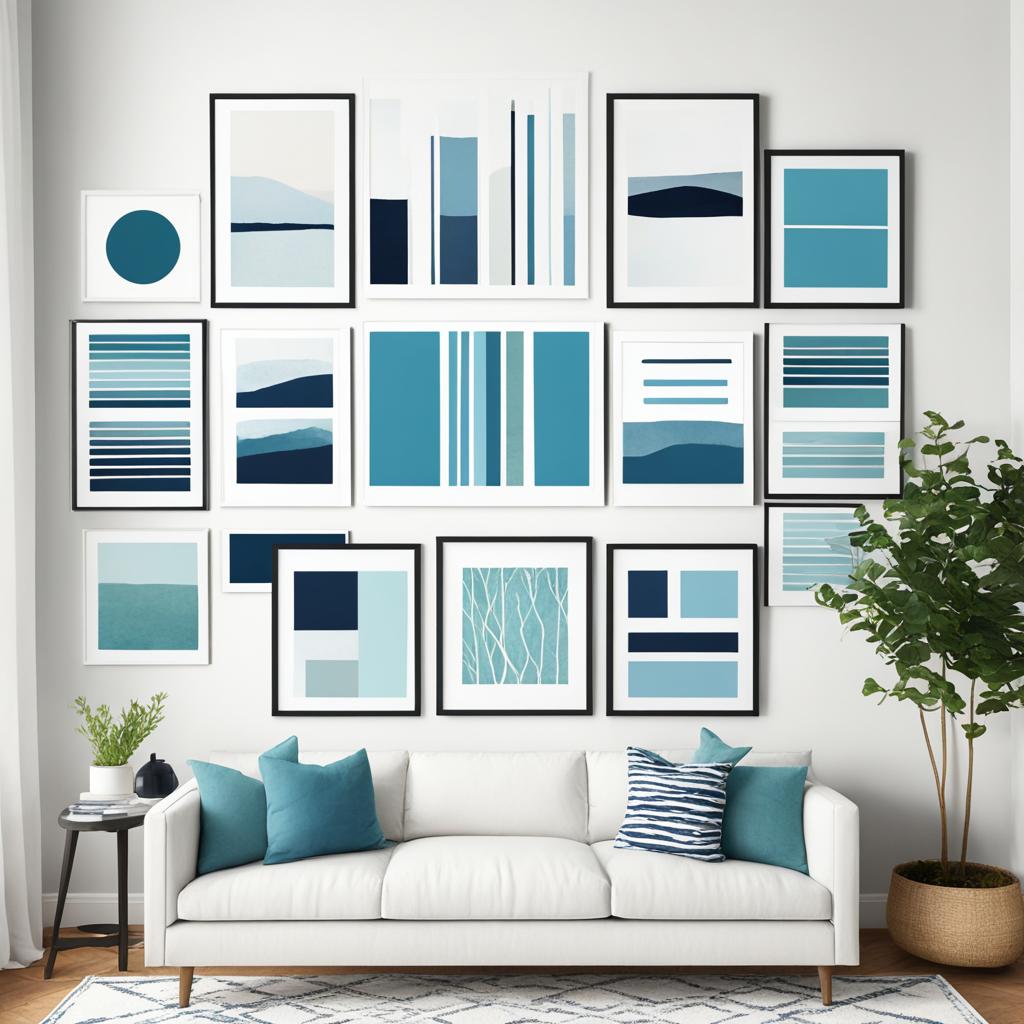
Fine-tuning the Layout for Personal Taste
The gallery wall design tool provides a solid foundation. Feel free to adjust by mixing frame styles or adding floating shelves. 85% of users find these calculators save time compared to manual methods.
Trust your instincts and create a display that reflects your unique style. Your personal touch will make the gallery wall truly special.
Advanced Tips for Gallery Wall Design
Create a stunning gallery wall with advanced techniques. Mix frame sizes for visual interest. Use a photo wall planner to try different combinations. Pair a large 30 x 24 inch piece with smaller 11 x 8 inch frames.
Spacing is key in gallery wall layouts. For big walls, keep frames 3 to 4 inches apart. In smaller areas, reduce spacing to 1.5 to 2 inches. This creates a cohesive look while giving each piece room to breathe.

Odd numbers work well in gallery wall design. Use 5, 7, or 9 pieces based on your wall size. This creates balance and visual appeal. Embrace asymmetry to add character and allow for future additions.
The right tools are essential for a perfect gallery wall. You’ll need:
- Pencils and painter’s tape
- Hammer and picture hanging kit
- Tape measure and level
- Wrapping paper for layout planning
A picture frame arrangement calculator can help you visualize your design. It streamlines the process before you start hanging. With these tips, you’ll create a unique and stylish gallery wall.
Incorporating Various Art Styles and Frame Sizes
A captivating gallery wall blends different art styles and frame sizes. It crafts a unique visual story. Gallery wall layout software can help you achieve this balance effortlessly.
Mixing and matching frame types
Variety is key when it comes to frames. Mix ornate with minimalist, wood with metal. This diversity adds depth to your display.
A wall art arrangement tool can suggest complementary frame combinations. It maintains harmony while offering diverse options.
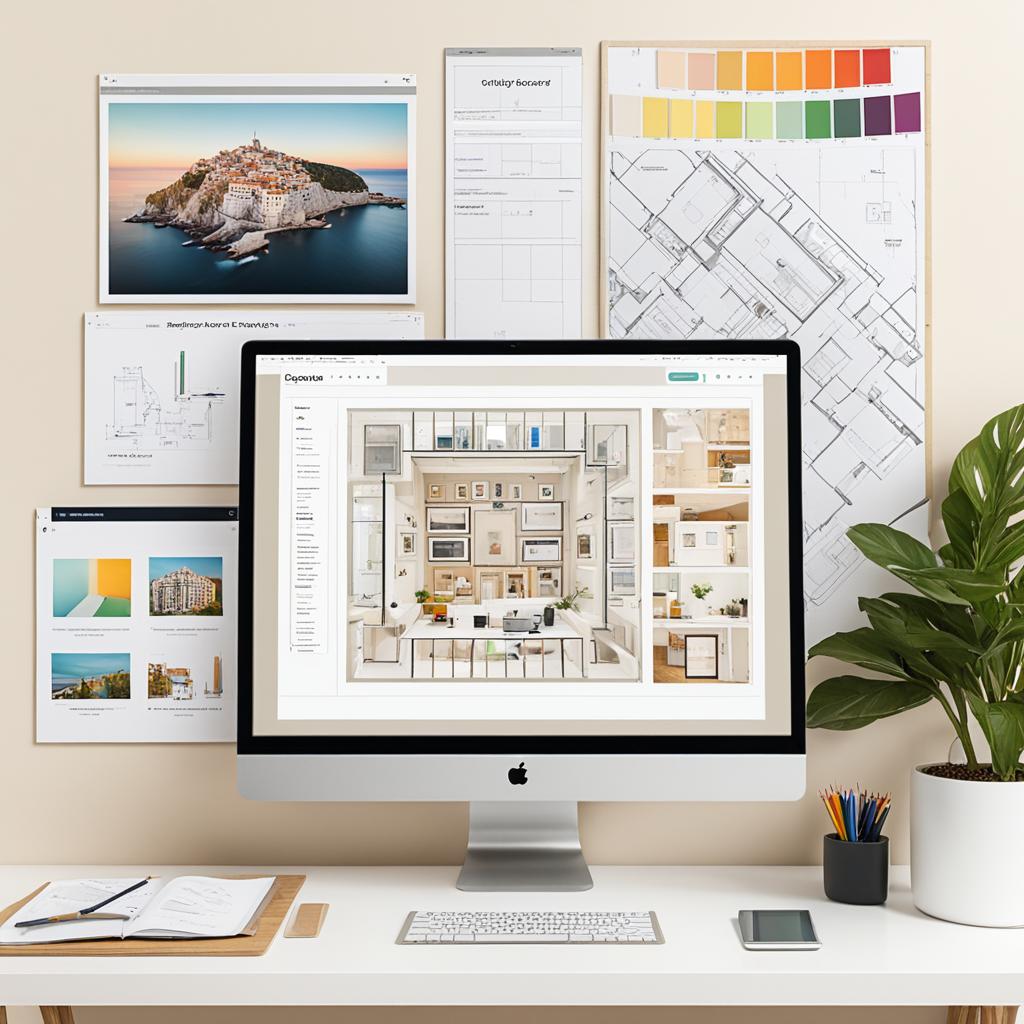
Balancing different art mediums
Combine paintings, photographs, and prints to create a rich art tapestry. This mix adds texture and interest to your gallery wall. A picture frame layout assistant helps arrange diverse pieces cohesively.
Creating visual interest through diversity
Vary the sizes and orientations of your art pieces. This creates a dynamic display. Use a gallery wall hanging guide for proper spacing and alignment.
Designers recommend incorporating personal elements that reflect your unique interests. This personal touch makes your gallery wall truly special.
| Frame Size | Recommended Use | Designer Approval |
|---|---|---|
| 5″ x 5″ to 42″ x 62″ | Wide range for diverse displays | 92% |
| Uniform sizes | Grid style or triple frame galleries | 58% |
| Mixed sizes with focal point | Asymmetrical galleries | 73% |
Thoughtfully incorporate various styles and sizes in your gallery wall. This creates a display that reflects your personality and taste. Let your creativity shine through every frame!
Conclusion
Gallery wall layout calculators have transformed art hanging. These tools help users create stunning displays and maximize wall space. They offer precise measurements and diverse layout options, simplifying the artwork arrangement process.
Frame clustering calculators save time and effort. Users can explore various arrangements without frustrating trial and error. These helpers cater to different design preferences, including grid, salon style, and linear layouts.
Tools like Printique’s Wall Gallery Designer offer customization options. They suit individual tastes and room aesthetics. By blending technology with creativity, anyone can create a professional-looking gallery wall.
These calculators make the art of display accessible to all. They combine personal style with technological precision. As a result, gallery walls become a reflection of one’s unique personality.
